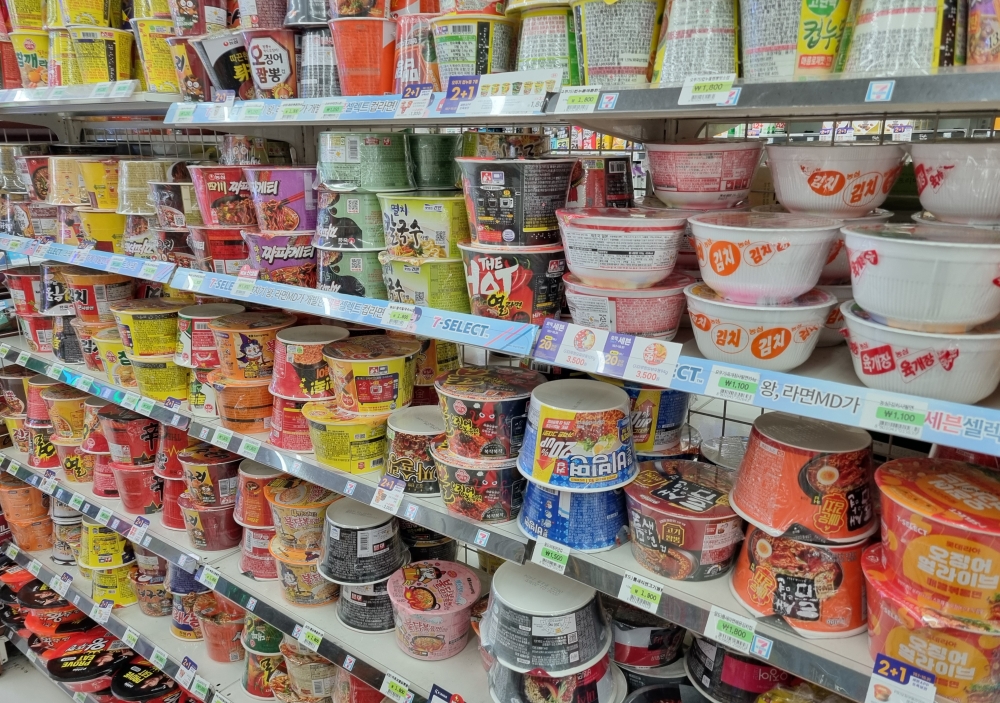
From 2018 to July this year, the Korean foods with the highest average growth rates per year for foreign credit card payments were ice cream (35%) and convenience store food (34%). Shown is a display of ramyeon (instant noodles) on Oct. 20 at a convenience store in Seoul's Jongno-gu District. (Aisylu Akhmetzianova)
By Aisylu Akhmetzianova
The growingly global popularity of Korean food covers not only traditional favorites like kimchi and bulgogi (marinated stir-fried meat), but also those eaten daily like ramyeon (instant noodles) and gimbap (seaweed rice rolls).
The Korea Tourism Organization (KTO) on Oct. 20 said its analysis of transactions of foreign credit spending from 2018 to July this year showed that the items with the highest average growth in annual spending were ice cream (35%), convenience store food (34%), and waffles and croffles (25.5%).
In the first seven months of this year, the most such payments were made for things at cafes (8.9 million), up 29.5% from the same period last year, baked goods (three million), a rise of 36.2%, and hamburgers (2.3 million), up 38.2%.
As of July, consumption of traditional snacks such as tteok (rice cake) and hangwa (traditional confectionary) shot up 76.9% year on year, while noodles and dumplings (55.2%) and gamjatang or pork backbone stew (44%) also recorded high growth rates. Familiar to Koreans but considered unique to foreign diners, these three dishes have seen a rise in international demand.
Convenience stores are also evolving. From 2023 through July this year, posts on food accounted for 40.1% of all convenience store-related content, with the top keywords being ramyeon (14.1%), coffee (10.5%) and snacks (7%).
In the first seven months of the year, the number of card transactions at convenience stores reached an estimated 13 million, the highest among all domestic food businesses.
aisylu@korea.kr